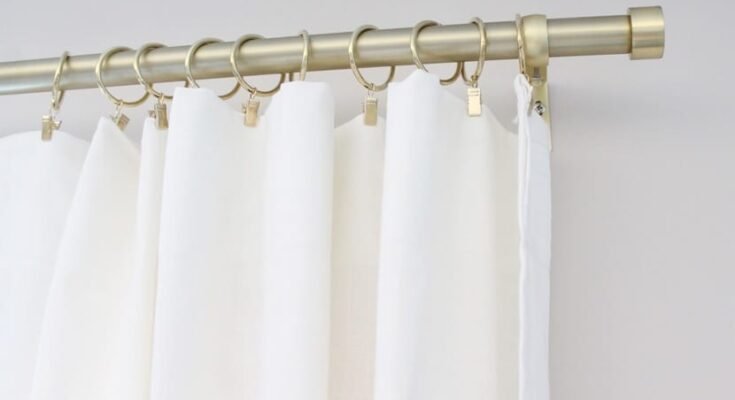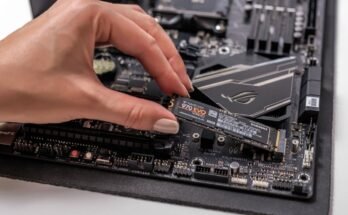When it comes to the choice of curtains for an interior, many factors determine the choice of different curtain elements like design, fabric, color, pattern, and hardware. Speaking of the curtain hardware, we can enlist a few essential items including rods, holdbacks, rings, and brackets.
Traverse curtain rods are designed to hold up and support curtains in the middle of a window. The brackets and rods can be installed at the top of a window, which is called a header, or at the bottom of the window, which is called a footer. The bracket is usually placed on the header and the rod is installed in the header. The rod goes through the header and through a channel or grommet, which is mounted on the header, into the wall.
Of all these items, the most noticeable and important selection is the choice of a curtain rod. No need to mention that the right choice of curtain rod not only makes your window coverings the center of attraction but also can add a touch of opulency and gracefulness to the whole interior decor.
For a way out, you can select from a range of different options like decorative, traverse, and standard rods. Having that said, today’s topic of discussion at Design Furniture revolves around one such type of curtain rod i.e. traverse curtain rod.
The Ultimate Guide To Design & Functioning Of Traverse Curtain Rods
With continuation of the above context, we’re going to cover all the different aspects of traverse curtain rods with primarily focusing on the functional feature of this curtain element. Hence, we’ll try to answer all the frequently asked questions about traverse rods for curtains starting with the basic question of the identity of these rods.
What Are Traverse Window Curtain Rods?
Basically, these are more of the decorative type rods and differ in the aspect of functioning from standard rod options for curtains. Such that, a traversing curtain rod operates/functions on a pulley system or slide track system. And, the curtains are hung by clips that are installed on the underside of the rod.
Hence, a traverse curtain rod won’t only add elegance to your set of window coverings but will also offer ease of functioning to let you handle your window treatment activity. Adding further, there are two rods in this system of operation (a double rod mechanism) that lets you open and close your curtains smoothly and flawlessly.
The Different Types Of Traverse Curtain Rods
Coming to the types of this amazing curtain rod, there are three options available on the market. We’ve briefly explained below all these three choices to help you clearly understand the differences between the design and functioning of these types.
1. The Standard Traverse Curtain Rod
This type of traverse rod will suit you in case you want to make the curtain header a center of attraction by keeping the hardware aside from the limelight. Besides, this type of traversing rod is inexpensive as compared to the other types.
2. Double Traverse Curtain Rod
As in the name, this type of traverse rod for curtains will be a favorable choice in case you want to add another covering option to your window frame i.e. draperies, valances, etc. Hence, it allows you to enjoy the benefits of two window treatments at the same time.
3. Decorative Traverse Curtain Rod
The last type of traverse curtain rod allows you to add decorative elements to your window coverings namely tacks, ribbons, etc. However, the basic function of this traversing rod type is to hang curtains that require rings to be swayed.
The Functional Mechanism Of Traverse Curtain Rods Explained
With reference to the context above, these rods comprise small clips or hangers incorporated into their design for hanging curtains. Basically, the hooks or clips are attached to the rod and operate on the mechanism of a pulley or sliding track system.
Speaking of the pulley mechanism, you must be aware of the gliding function offered by this system thus, allowing the curtain panels to open and close as flat as a pancake. And, all you need to do for making the curtain panels move is to pull a cord or string thus, offering maximum ease of function that you can get with any other type of curtain operation mechanism.
And having that said, you must have been aware of the fact that traverse curtain rods are not compatible with all curtain styling approaches i.e goblet, grommet, eyelet, etc. Therefore, the question arises about the type of curtains that can be paired with traverse curtain rods ideally.
The Choice Of Ideal Curtain Styles For Traverse Curtain Rods
For an ideal choice of curtain carrier styles, there are two of the most popular choices available on the market that fit precisely and elegantly with this type of curtain rod design. We’ve described both the carrier styles for curtains below,
1. Pinch Pleat Curtain Hanging Style
The top of the curtain header nips back in this style of curtain hanging giving a unique, elegant appearance to your window coverings. All you need to do is to buy pins for pinch pleat curtains so as to hang them on the traverse rod.
2. Ripplefold Curtain Hanging Style
Another great option is to opt for ripple fold design curtains so as to efficiently attach them to the traversing curtain rod. Ripple fold carrier style comprises continuous folds running along the length of the curtains thus, offering a delightful appearance to your window.
In The End
We hope to succeed in providing you with answers on the topics of design and the functional mechanism of the traversing curtain rods. This valuable piece of information will help you make an informed, right decision about whether you should opt for these types of curtain rods for your home window treatments.
Also, this topic of discussion includes the different types of traversing rods besides describing some of the ideal curtain styling approaches that can function best with these types of curtain rods. No doubt, the purchase of this type of curtain rod will prove to be beneficial in terms of aesthetics as well as smooth curtain functioning.
Read More: The Blog Type The Blog Type



